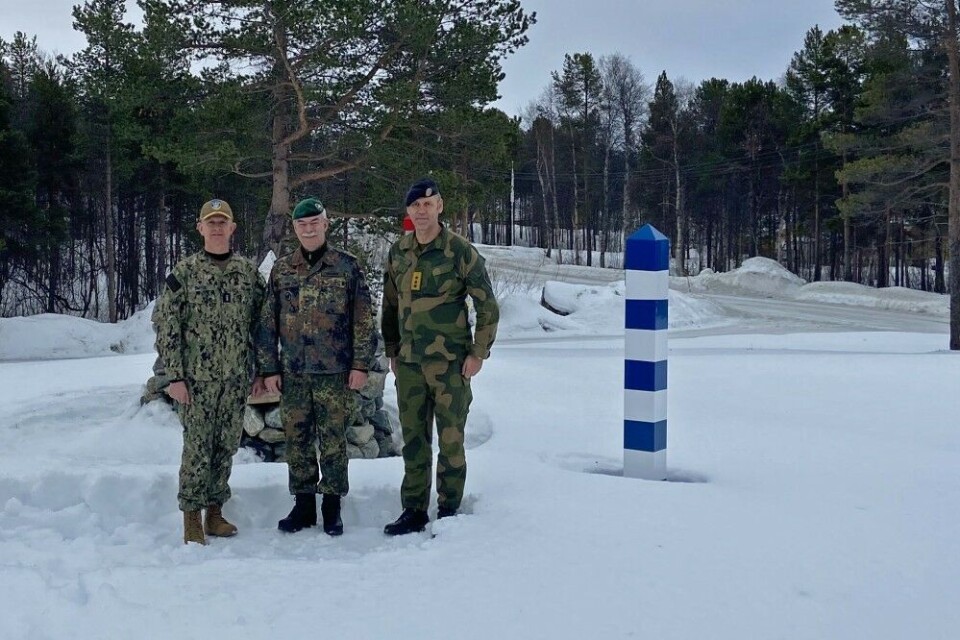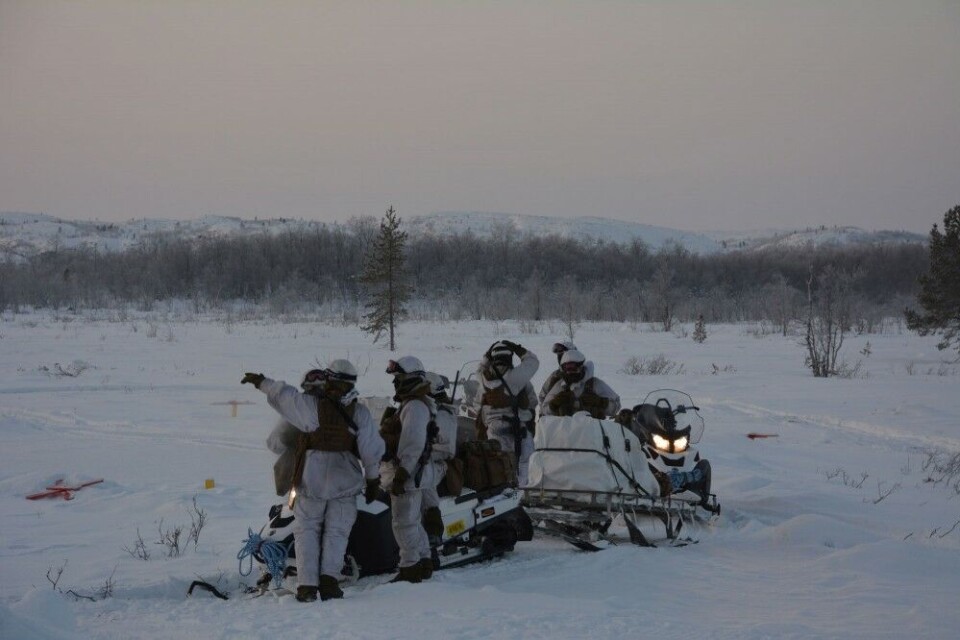
Top NATO commanders give Norway high marks for balancing ties on Arctic border to Russia
NATO’s two top operational-level commanders, General Jörg Vollmer and Vice-Admiral Daniel Dwyer, express high satisfaction with how Norway handles the challenges of sharing border to one of the most militarized regions of Russia.
General Vollmer and Vice-Admiral Dwyer spent Sunday driving snowmobiles along Norway’s border to Russia. Guided by soldiers from the Garrison of Sør-Varanger (GSV) the military commanders got a unique insight into NATO’s northernmost land territory of responsibility.
Snow-covered nature, beauty, and silence of the Pasvik valley’s taiga forest. Who could think that only a few kilometers to the east are home to brigades that have hundreds of soldiers fighting in Putin’s horrific war against the Ukrainian people?
The bombings of the last four weeks have been the most brutal bloodshed in Europe since Second World War.
While the Russian president claims one of his objectives is to keep NATO at distance, the 200 kilometers long border to the North Atlantic Alliance in the Pasvik valley proves to be the country’s most peaceful of them all. Moscow has during history been at war with all of its European neighbors, except Norway.
Norway is one of the twelve founding members of NATO. Today, the alliance counts 30 members and two more, Finland and Sweden, are knocking on the door.
All since 1949, Norway has balanced its security relations with the much larger neighbor to the east on deterrence and reassurance. No nuclear weapons on Norwegian soil, no foreign military bases and strict limitations on other NATO countries’ possibilities to exercise in the eastern part of Finnmark region.
Norway’s deterrence is solidly based in NATO, nowadays highly visible as exercise Cold Response 2022 takes place. The Norwegian-led Arctic military drill, however, has its main theater some 5-600 kilometers away from the Russian border. For Moscow, low tensions in the vicinity of the strategically important Kola Peninsula help avoid misunderstandings.
Russia’s fleet of ballistic missile submarines, armed with nuclear warheads that can reach North American territories, are based in Gadziyevo on the coast to the Barents Sea, some 100 kilometers from the border to Norway.
Chief of the Norwegian Joint Headquarters, Lieutenant General Yngve Odlo, explains why it is important for him to bring the two top NATO commanders to Pasvik.
“The main reason we are here is to see how Norway handles the relationship with Russia as a border nation. The military, the police and the state,” he says. “Relations are different from nation to nation and it is important for the NATO commanders to have an understanding of the Norwegian approach.”
NATO-Russia border
Together with the Baltic States, and Poland which neighbors Kaliningrad, is Norway the only NATO member with a direct border to Russia.
Commander of Allied Joint Force Command Brunssum, General Jörg Vollmer, was very pleased with what he saw.
“Solutions here are definitely different than in other areas of our responsibility,” Vollmer says to the Barents Observer.
“This is the most northern land territory of NATO. Therefore it is so important really to understand what are the challenges. Coming here gives you a better sense, talking to the soldiers, it is always about history and this gives you a much better flavor and understanding.”
Jörg Vollmer is responsible for the security of the Alliance in Northern Europe.

The General gives Norway good marks.
“The way Norway did it is a good example for other areas as well. The specifics in this region, the territorial waters, it is necessary always to have the ability to talk with each other,” Vollmer says underlining the importance of the direct line between the Norwegian Joint Headquarters near Bodø and Russia’s Northern Fleet in Severomorsk.
“To have this famous red phone if an incident occurs, to speak with each other and to avoid any miscalculations which could end in something worse.”
Arctic hotline
Ahead of Cold Response 2022, Lieutenant General Odlo was online with the powerful Northern Fleet Commander Admiral Aleksandr Moiseev and informed about the objectives of the Norwegian-led NATO exercise.
For NATO, which has deployed big forces on standby in eastern Europe as Russia attacked Ukraine, the long-time planned Arctic military drill has not been scaled down.
“The fact that we can have a large exercise such as Cold Response going on with the events that are happening in Ukraine just shows the capability, the resiliency of NATO,” says Vice-Admiral Daniel Dwyer, Commander Second fleet and Joint Force Command Norfolk.
“Cold Response shows the flexibility, determination and readiness that NATO has. It is just incredibly impressive,” the Vice-Admiral notes.
From Florida to Finnmark
He tells that outside his headquarters stands a sign. It says “JFC Norfolk: Multi-domain command, from seabed to space, from Florida to Finnmark.”
“It’s a great opportunity to be in Finnmark. To see the professional soldiers here. I’m incredibly impressed and also thankful to have such a capable, professional military, evidenced by the soldiers at the outpost here,” he says.

There have likely never been so many stars on high-ranking uniforms at the small, remote border guards’ station in the Pasvik valley before. NATO has neither had two out of three operational-level commanders so close to Russia’s northern border before.
The high-ranking NATO military officials agree that the security architecture of Europe is fundamentally changed after Putin on February 24 launched a massive war on Ukraine. How it will impact the north and Norway’s balance between deterrence and reassurance, however, is still unclear.
“Nobody has the answer yet,” Odlo says.
“When you have a big nation like Russia who has the ability and capability, but also the will to grab another sovereign state, invade, of course, that will rearrange the whole security. We need to take other precautionary measures,” the Commander of Norway’s Joint headquarters states.
“Our job is to defend our people. We now see that war is a possible outcome. But how security measures will be rearranged, I don’t know,” Lieutenant General Yngve Odlo says.
Tectonic shift in European security


















